Thousands of weapons in some of the world’s most conflict-scarred states are being hammered, filed and welded into symbols of hope. From Maputo to Mexico City, artists are transforming decommissioned arms into an arsenal of art to highlight the futility of war and promote psychological healing.
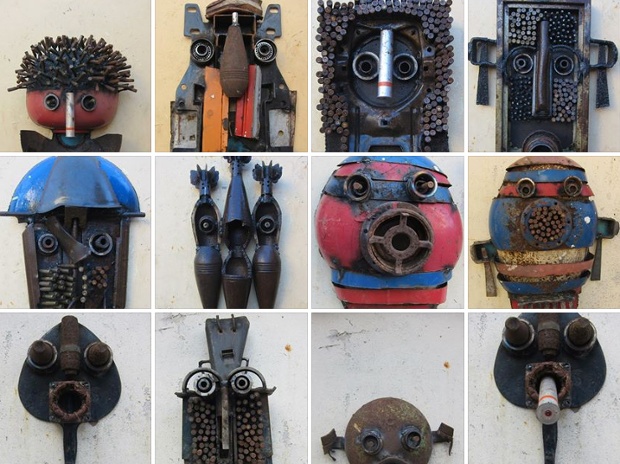
Sculptor Gonçalo Mabunda recycles weapons recovered from Mozambique’s 16-year civil war, which ended after a truce in 1992. The Maputo-born artist twists and melds AK-47s, rocket launchers and pistols into anthropomorphic forms. Photograph: Gonçalo Mabunda
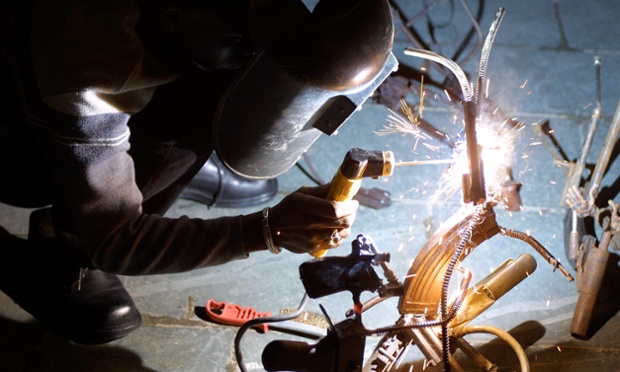
Mabunda, seen here at work, lost relatives in the Mozambique conflict. The sculptor says handling decommissioned arms can be an emotional experience – and transforming them into artwork even more so. Photograph: Martin Argles for the Guardian.
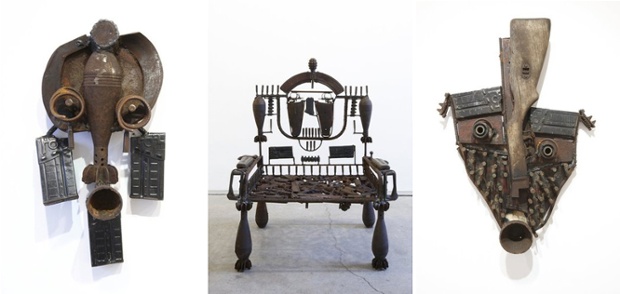
Some of Mabunda’s more iconic pieces, such as tribal thrones made entirely of bullets and masks fashioned from AK-47s, have been exhibited at the Hayward Gallery in London, the Museum of Modern Art in New York, and the Pompidou centre in Paris. Fans of his sculptures include the former US president Bill Clinton, who commissioned the artist to create trophies for his philanthropic organisation the Clinton Global Initiative. Photograph: Gonçalo Mabunda
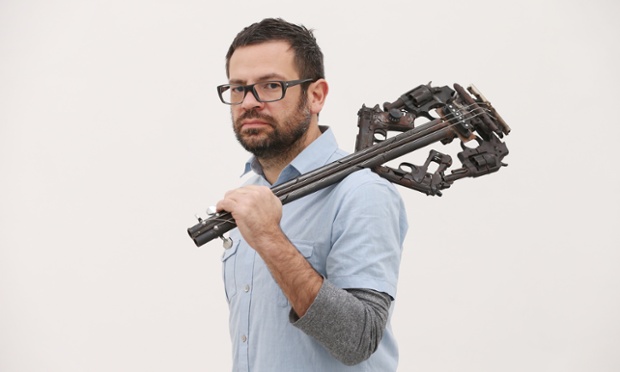
Pacifist Pedro Reyes uses art to challenge gun culture in Mexico, one of the most violent countries in the world. Photograph: Peter Macdiarmid/Getty Images
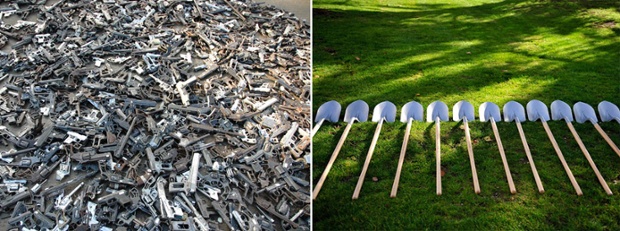
In his Palas por Pistolas project, Reyes persuaded residents of Culiacán to exchange their guns for coupons to buy household appliances. Locals donated 1,527 guns, which were melted to create shovels to plant trees and shrubs, an attempt to both beautify the crime-stricken city and stem the trade of small arms. Photograph: Pedro Reyes
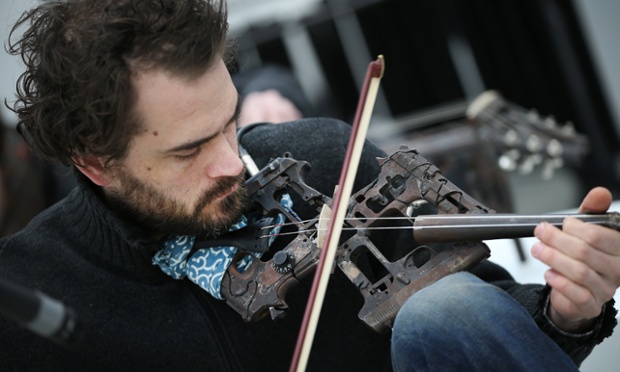
Given the remnants of 6,700 weapons seized in Ciudad Juárez and destroyed by the Mexican army, Reyes fashioned two groups of instruments. The first, a series called Imagine, is an orchestra of 50 instruments – including flutes, string and percussion – designed to be played live. Above, Violinist Tom Lamb plays an instrument made from recycled guns. Photograph: Peter Macdiarmid/Getty
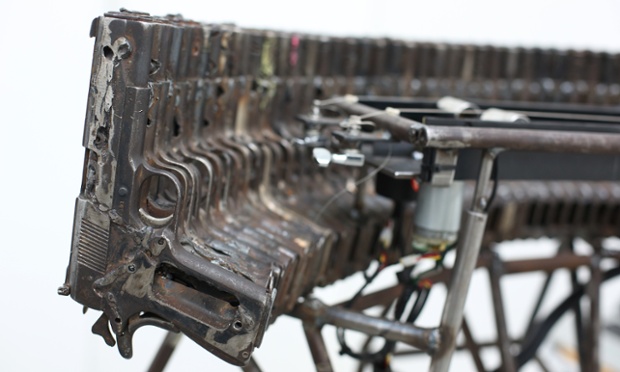
For the second series, Disarm, musical instruments were created from the remnants of weapons seized by the Mexican army. The machines, operated by computer, can be programmed to play complex compositions, producing enough sound to fill a large concert hall. Peter Macdiarmid/Getty
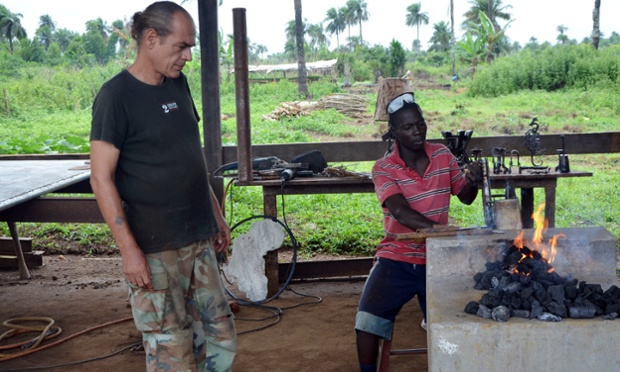
Looking for a change of pace, blacksmith Manfred Zbrzezny moved to Liberia from Germany in 2005. At the time, Africa’s oldest republic was struggling to recover from two successive civil wars that had left a quarter of a million people dead. In an effort to inspire reconciliation among the nation of 4 million people, Zbrzezny joined forces with local youths to launch a weapons conversion project that recycles munitions from the disarmament process. Photograph: Zoom Dosso/AFP/Getty
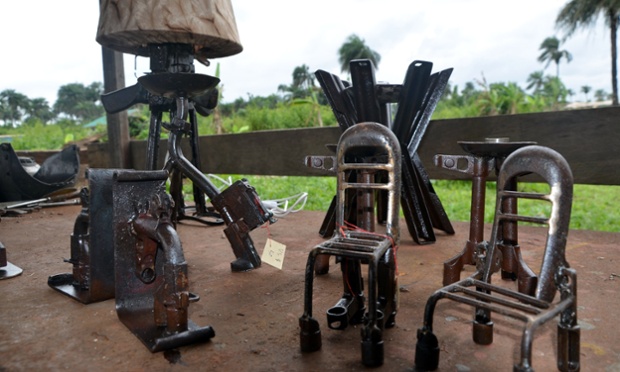
Eager to expand his work, the German-Italian blacksmith is trying to persuade the UN mission in Liberia to donate its weapons as scrap. Photograph: Zoom Dosso/AFP/Getty
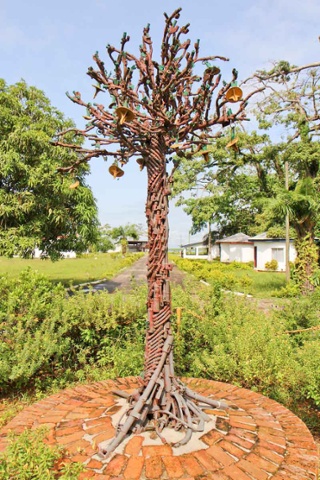
One of Zbrzezny’s most provocative pieces is the lifesize Tree of Peace, sculpted from the barrels of decommissioned AK-47s. The artwork stands as a towering beacon of hope on Providence Island, commemorating the spot where freed US slaves landed in the 19th century to found the new republic. Photograph: François Beaurain/Manfred Zbrzezny
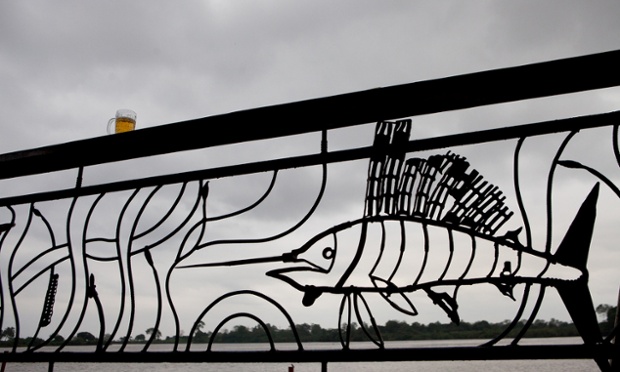
A bannister created for a marina. Transforming the arms is a complex, laborious process that can begin only once the weapons have been carefully demobilised. But welders at Zbrzezny’s Fyrkuna Metalworks workshop say melding munitions into ornamental structures is a labour of love that has helped many come to terms with Liberia’s violent past. Photograph: Ken Harper/Togetherliberia.org
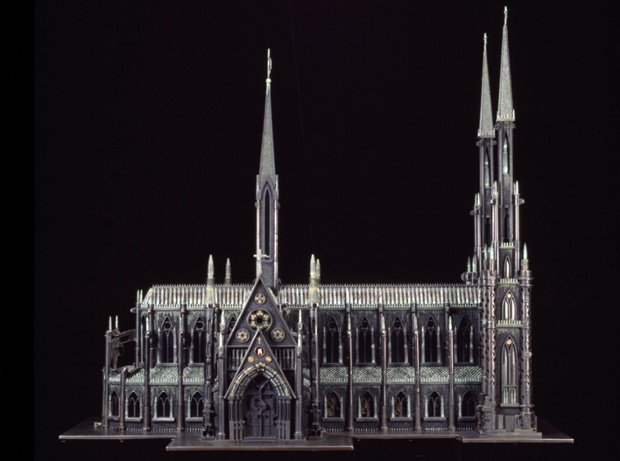
Born in Brooklyn to a Jewish family, Al Farrow has used art to express concern about international arms sales. His early sculptures include bodies fused to aircraft. More recently he has melded bullets, grenades and other instruments of oppression to create mini 3D replicas of religious buildings. Photograph: alfarrow.com
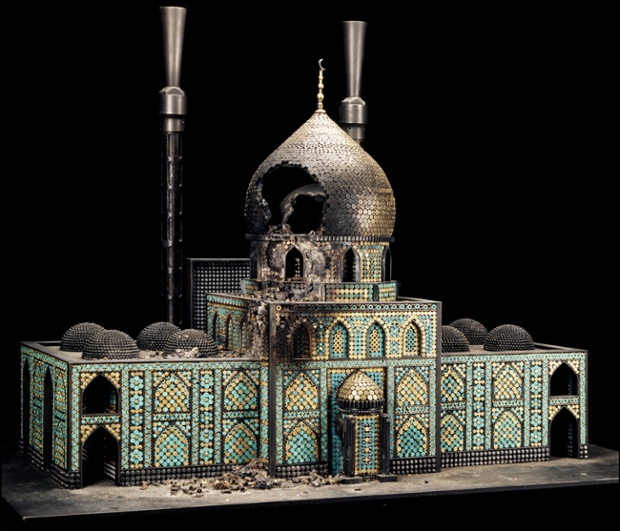
Farrow’s Reliquaries series recreates sacred imagery to draw attention to the relationship between war and religion, and to the human rights violations committed in the name of God. Above, the Bombed Mosque. Photograph: alfarrow.com
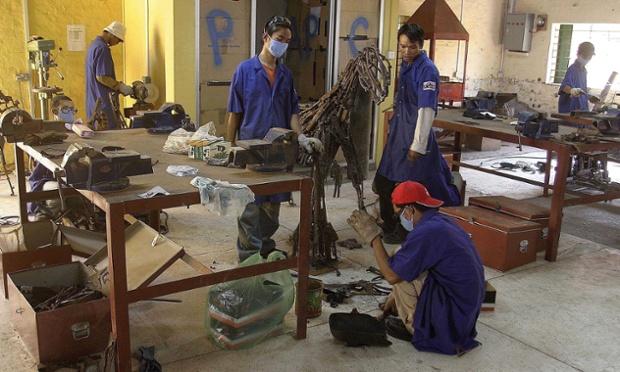
In the outskirts of Phnom Penh, Cambodia, students of the Royal University of Fine Arts transformed rusty AK-47 and M-16 rifles discarded on Cambodian battlefields into sculptural furniture and art. Photograph: Sipa Press/Rex Features
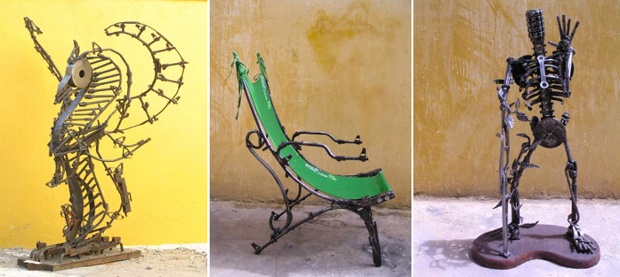
The Peace of Art project was established in 2003 by British artist Sasha Constable – the great-great-great-granddaughter of landscape painter John Constable – and EU arms specialist Neil Wilford. The students, who had no previous experience of working with metals, recycled more than 800 weapons. Photograph: Sipa Press/Rex Features

Art of war: melding arms into weapons of mass attraction
Leave a reply
Share This





